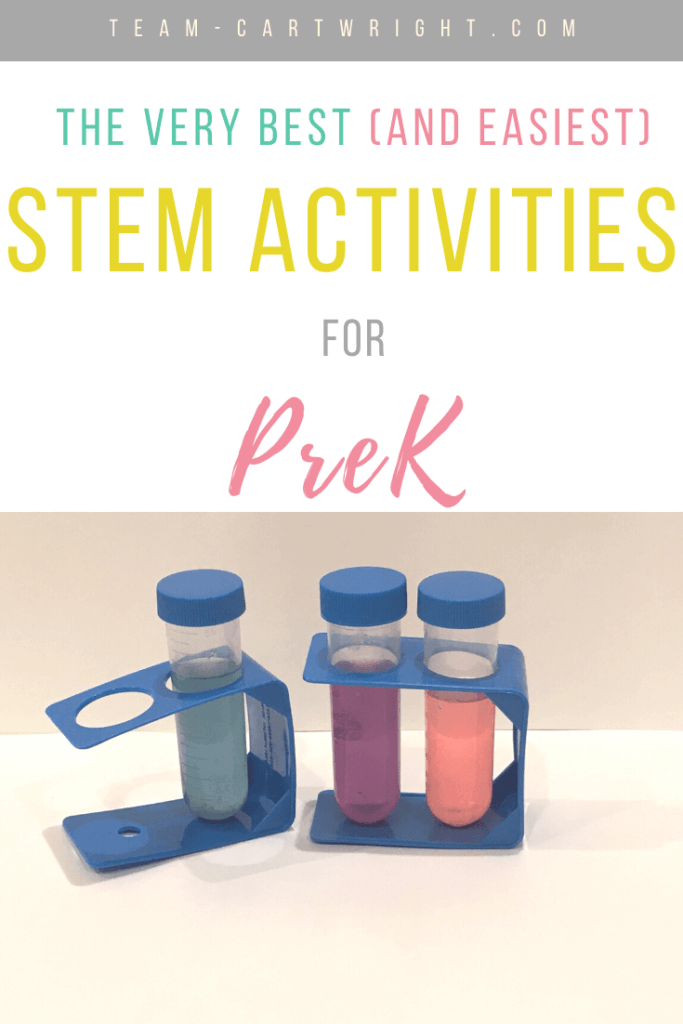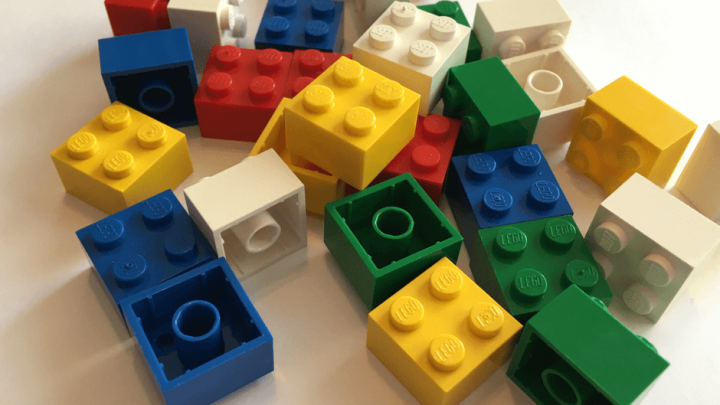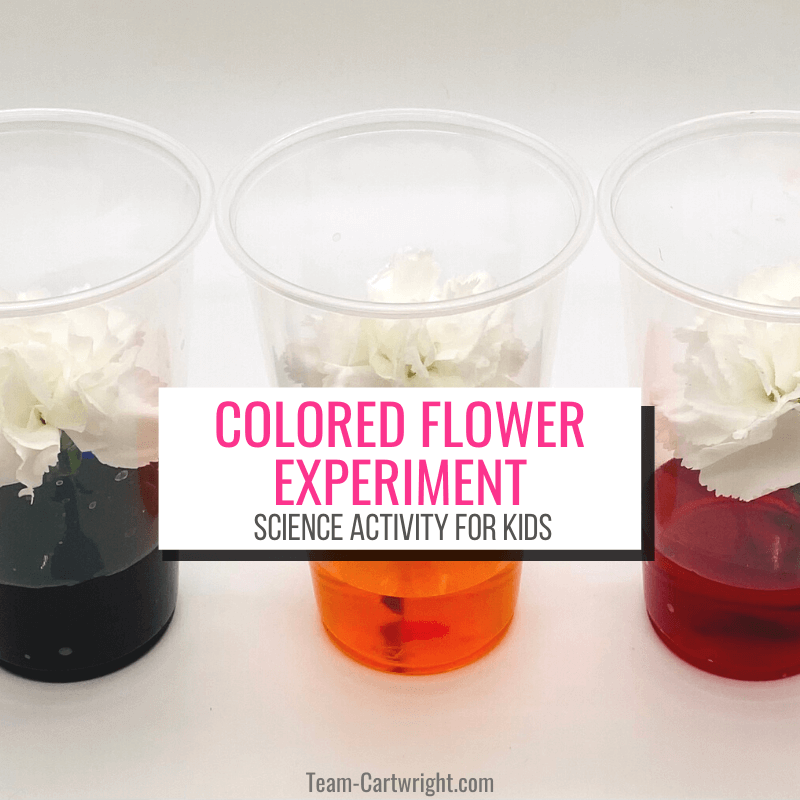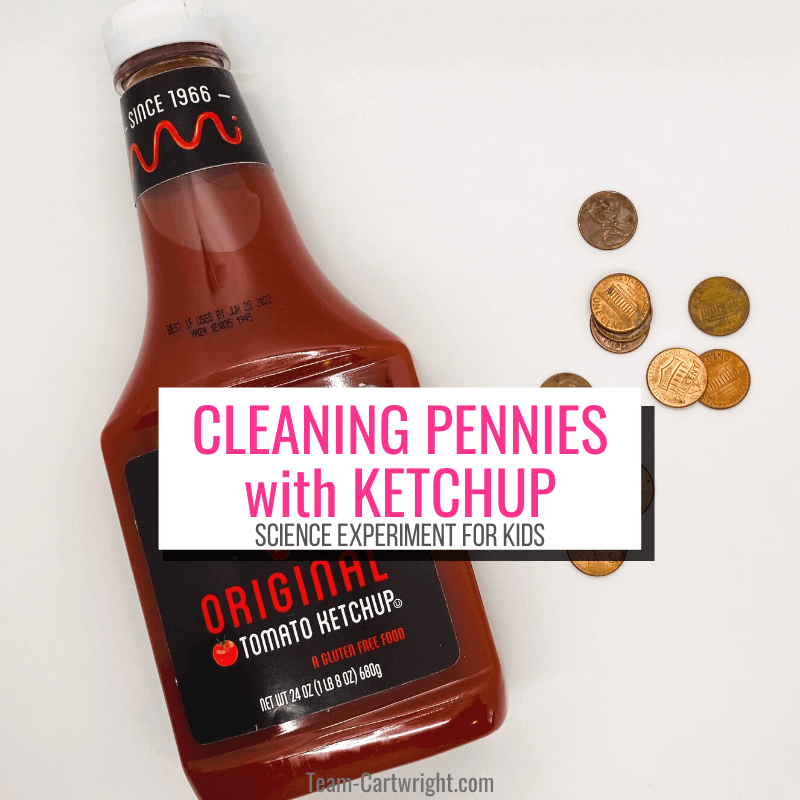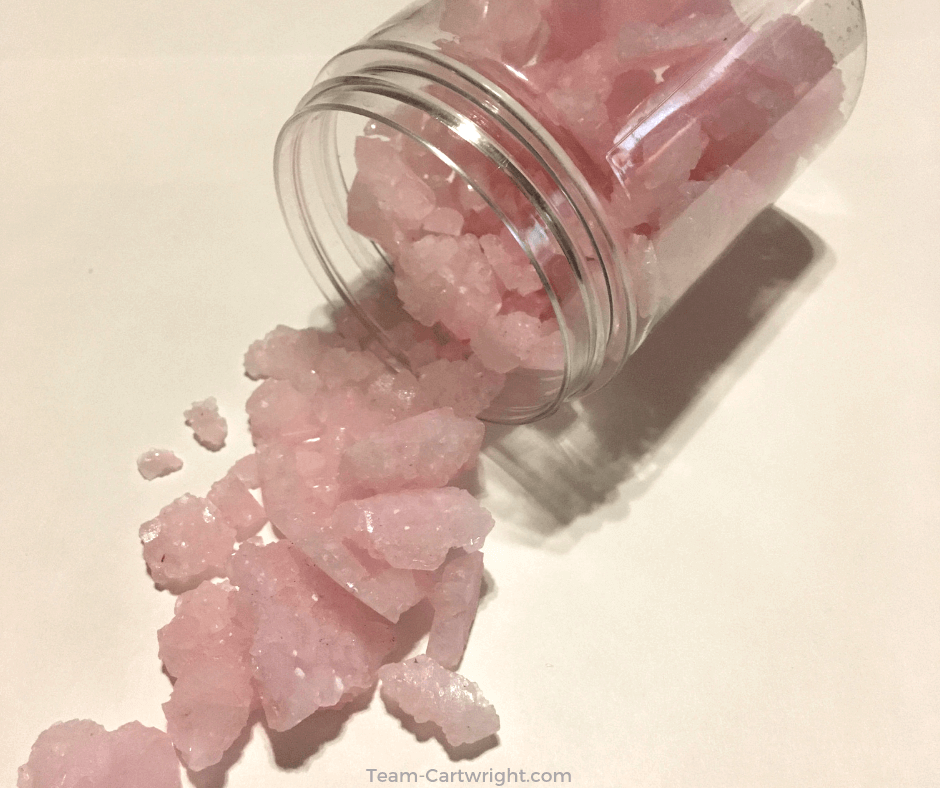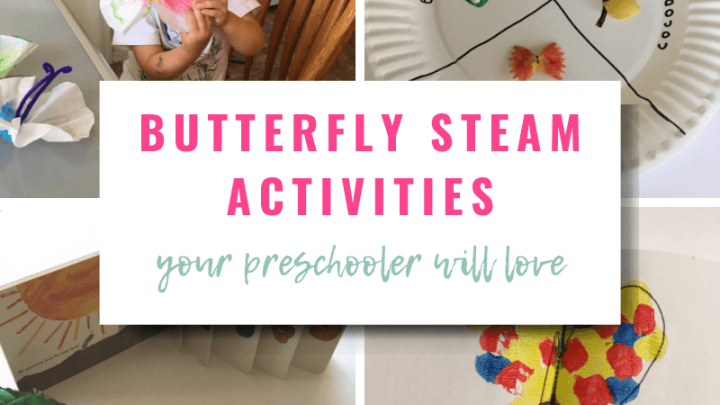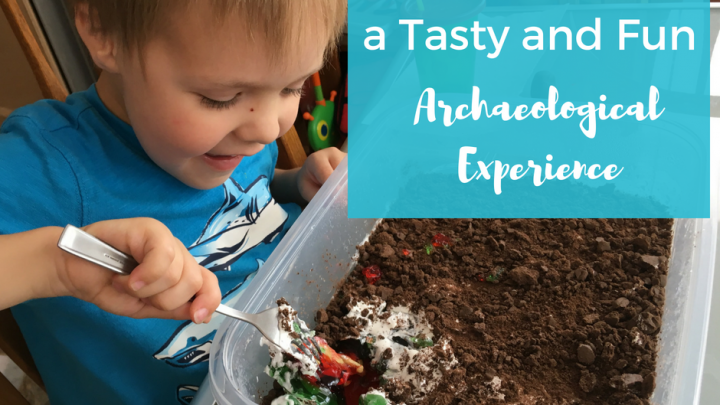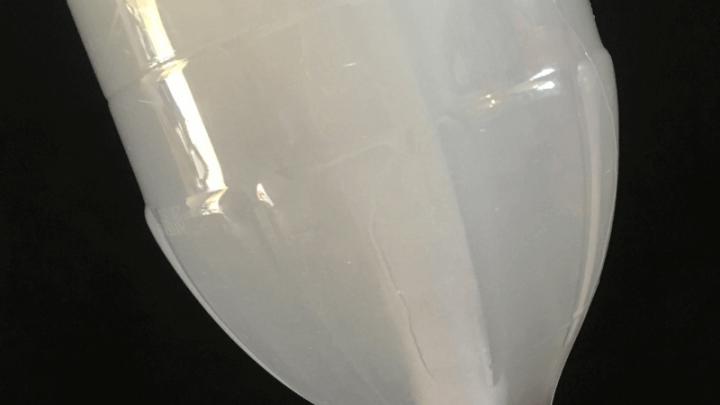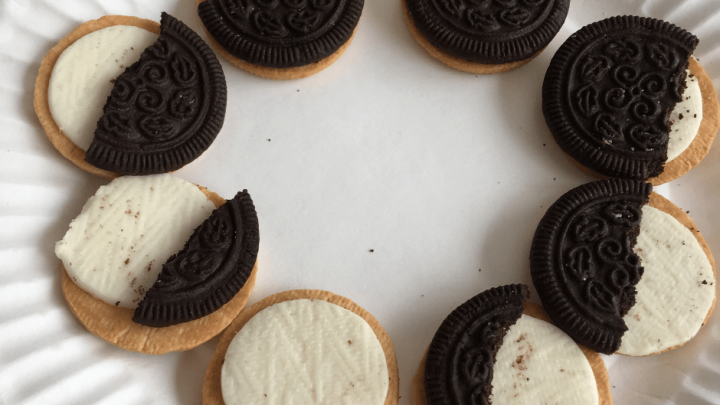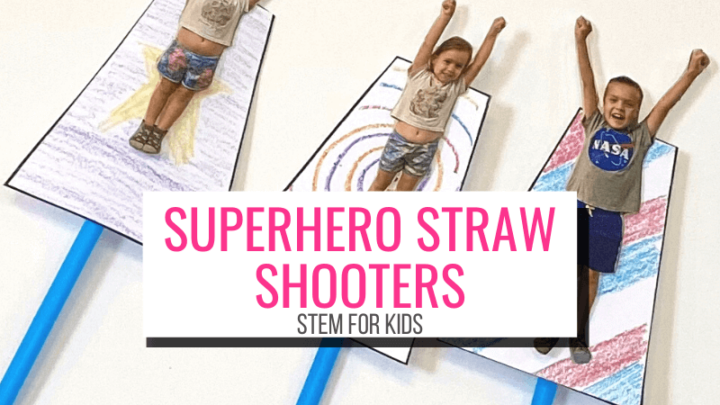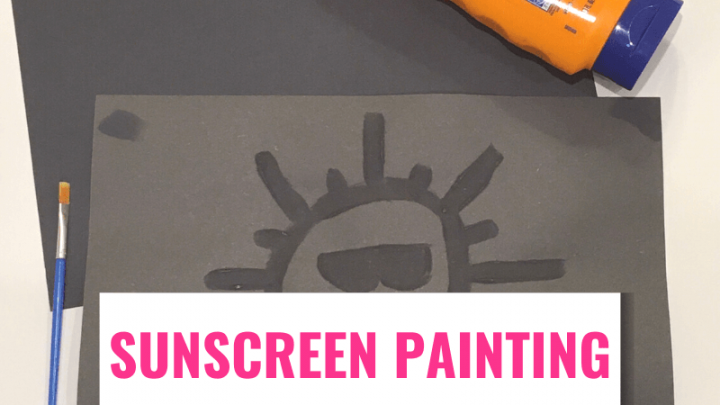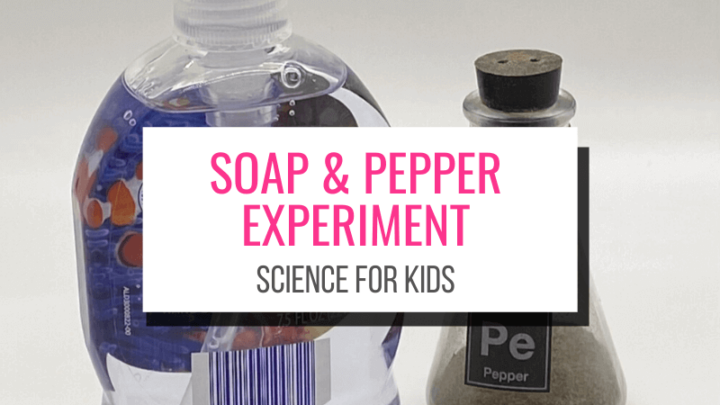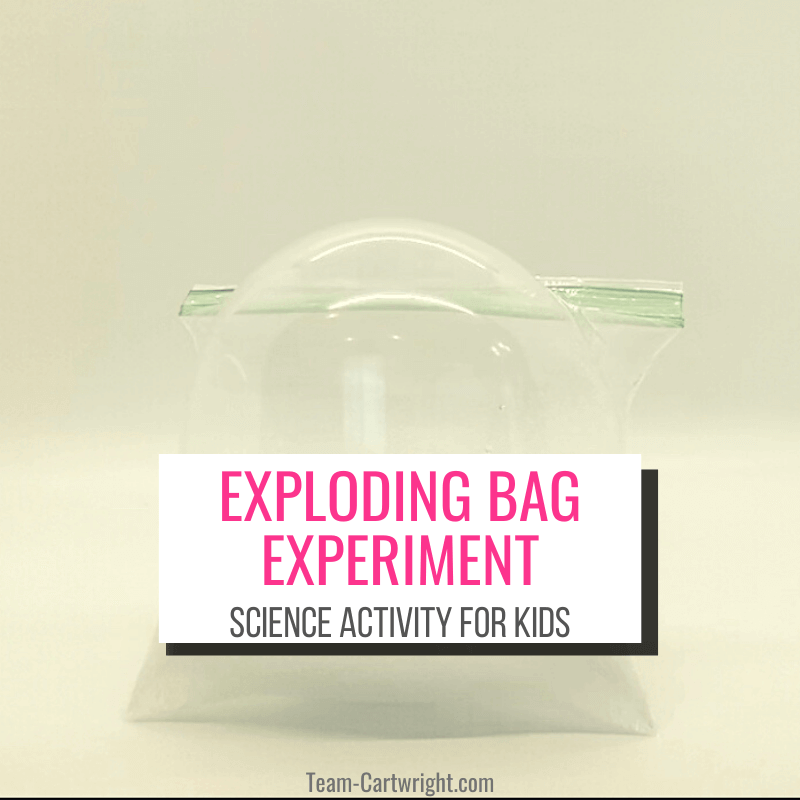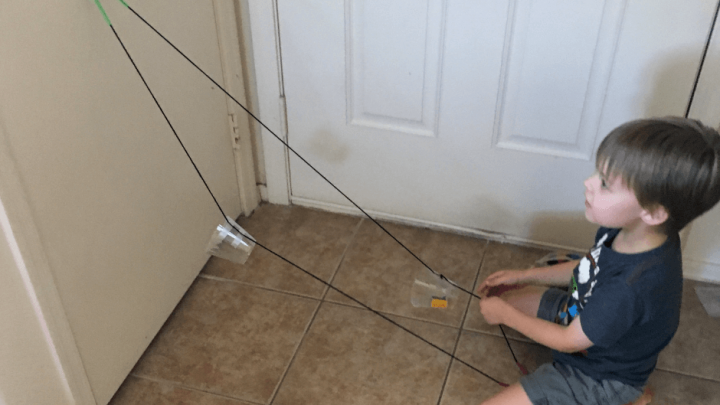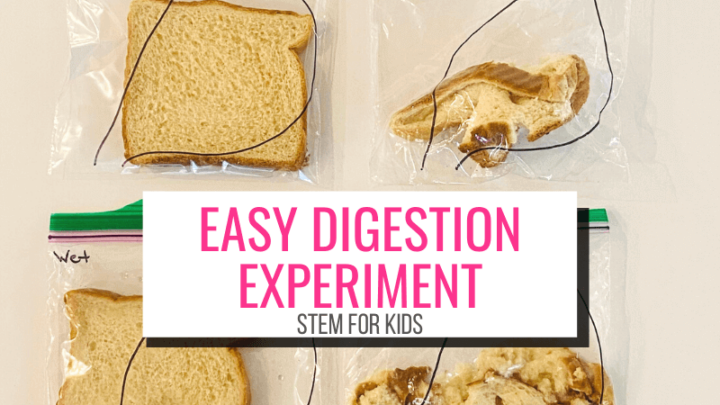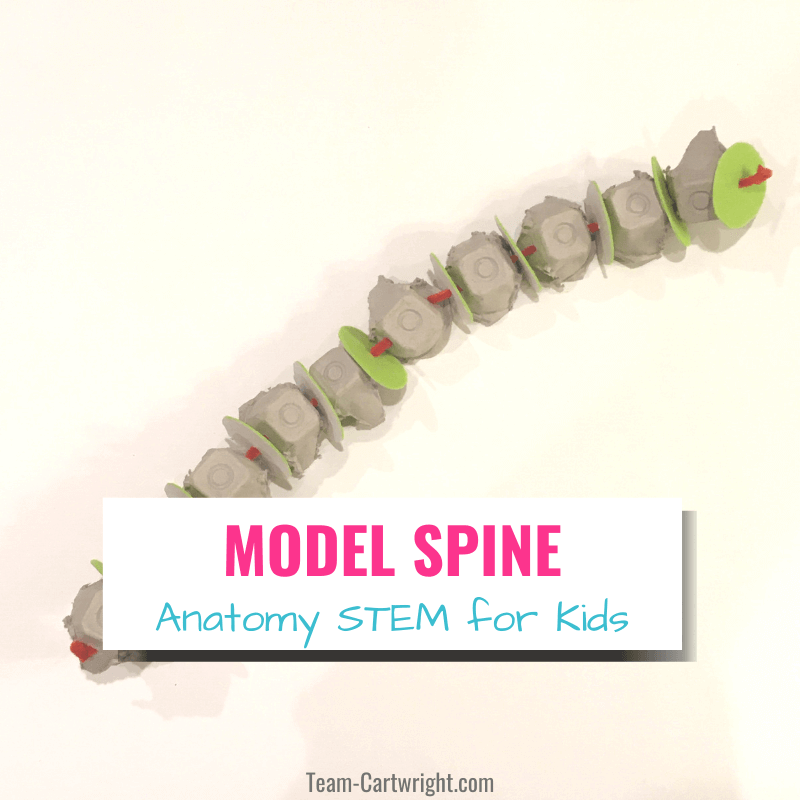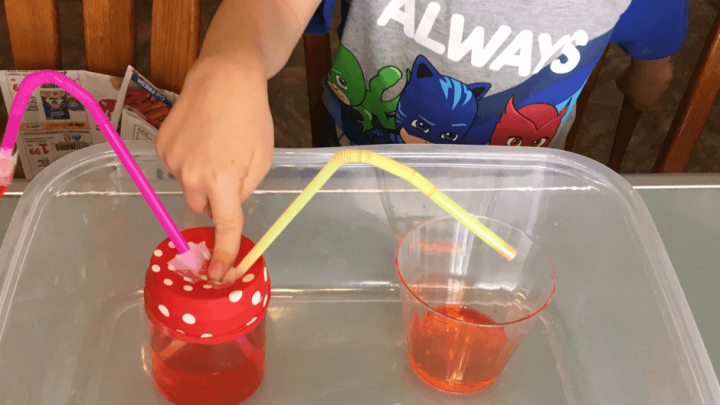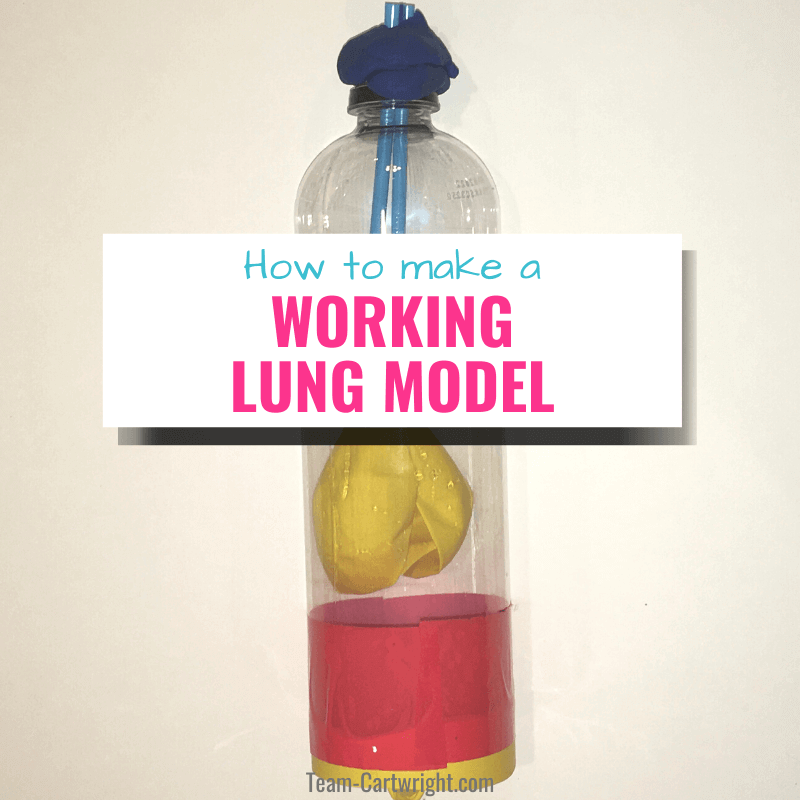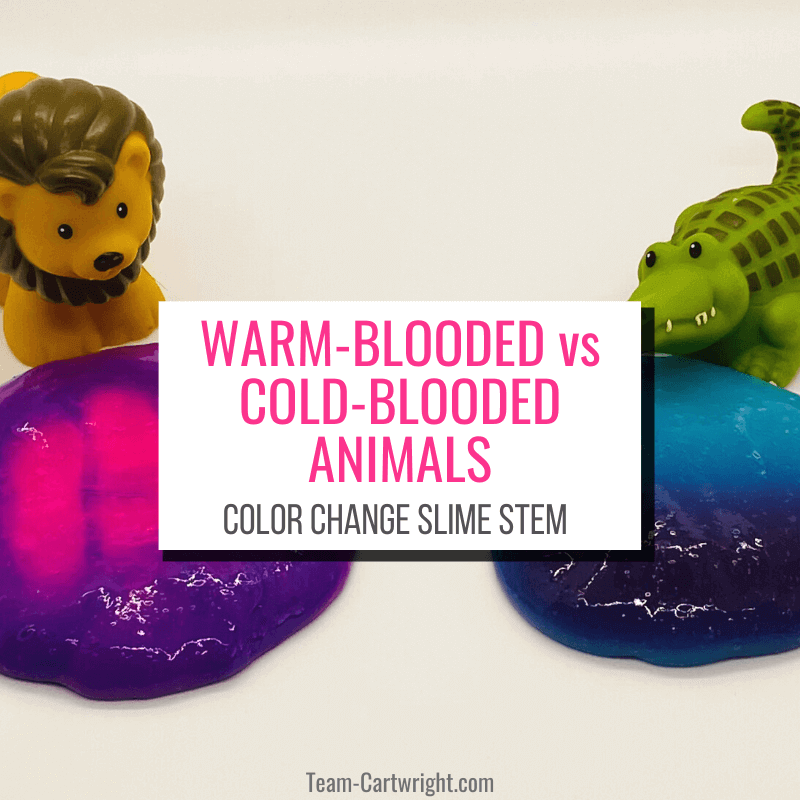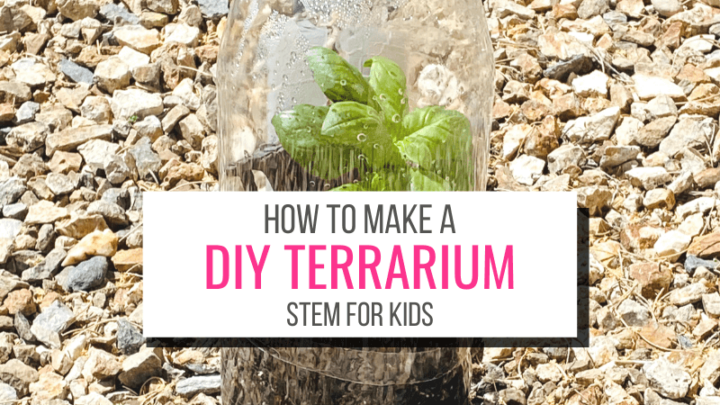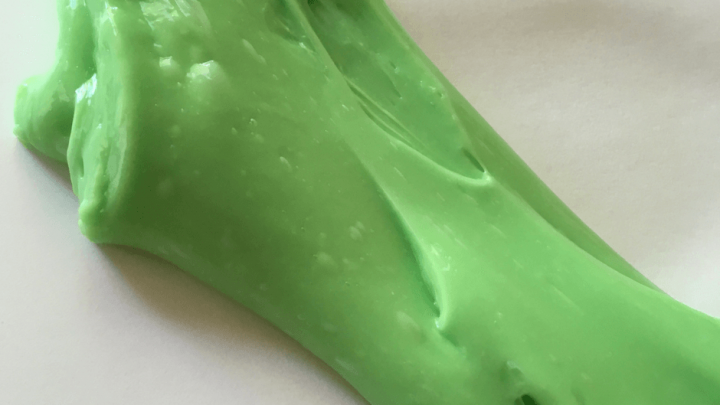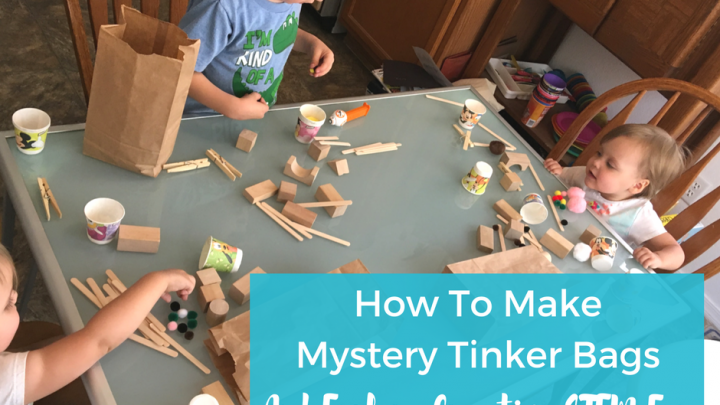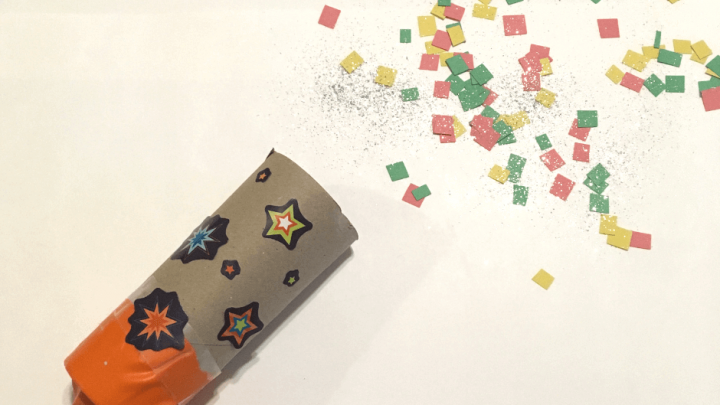PreK STEM Activities
PreK is an amazing fun stage, and it is one with its own unique needs. PreK kids are still focusing heavily on play and hands-on learning experiences, but they are also starting to learn some of the basics of ‘real’ school.
This means you are ready to explore more concepts, and you are ready to dive a bit deeper into following directions and the scientific method. The focus is still on fun, but you can expect a bit more attention to the process.
This just makes doing STEM with your child better because we start to eliminate some of the chaos. (Note I said some, not all.)
Here is what STEM activities and science experiments should look like with PreK kids, plus a big list of activities your little scientist will love.
(You can keep scrolling to get straight to the activities too!)
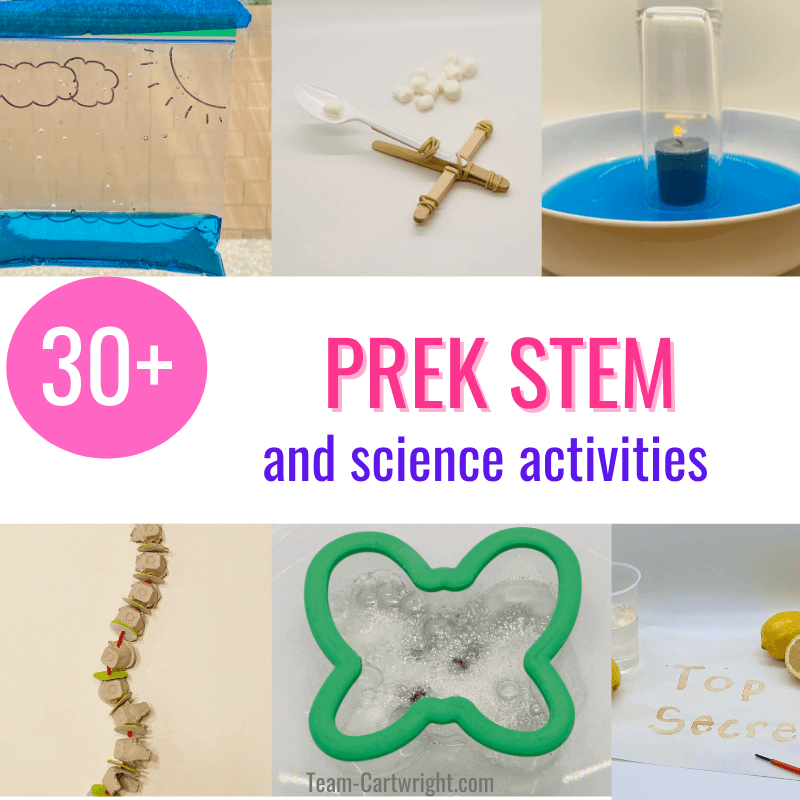
What's In This Post?
- PreK STEM Activities
- Goals for PreK STEM Activities
- Easy PreK STEM Activities
- PreK STEM Activities
- Kids Can Code! Simple and Fun Lego Coding Activities
- 3 Easy Science Activities to Teach Kids How Colors Work
- Colored Flower Experiment: Spring Science for Kids
- At Home Chemistry: Cleaning Pennies with Ketchup
- How Did You Hear That? Simple Sound Science for Kids
- Growing Crystals for Kids: Create Your Own Jewels!
- Butterfly STEAM Activities for Preschoolers and Toddlers
- Dinosaur Preschool Activities: Sensory STEM Fun
- How To Create a Tasty and Fun Archaeological Experience
- Easy Weather Science Experiments for Preschoolers and Toddlers
- Moon Activities for Preschoolers
- How To Make Superhero Straw Shooters
- Sunscreen Painting: STEAM For Kids
- Soap and Pepper Experiment: How soap works
- Leak Proof Bag Experiment
- Exploding Bag Experiment for Kids
- Funicular Trains: Pulleys for Kids
- Science by the Pool: Easy Summer STEM Activities
- Simple, Strange, and Fun Human Tricks to Mess with Your Kids
- How To Make a DIY Stethoscope for Kids
- Digestion Experiment for Kids- DIY Stomach Model
- How To Make a Model Spine: Anatomy STEM for Kids
- Easy Heart Pump Model: Cardiovascular STEM for Kids
- Working Lung Model for Kids
- Warm-Blooded Vs Cold Blooded Animal Activity (with Color Changing Slime)
- How To Make Butter with Kids: The Science of Churning Butter
- Lemon Juice Secret Writing: DIY Invisible Ink Science
- DIY Soda Bottle Terrarium For Kids!
- The Science of Slime and the Best Homemade Recipes
- How To Make Mystery Tinker Bags and Explore Creative STEM Fun
- DIY Confetti Poppers for Kids!
- How To Make an Easy Easter Egg Rocket
- Science Experiments for PreK
PreK STEM Activities
PreK is an important year for children. They are still little and having the fun of preschool, but there is a bigger emphasis on learning letters, numbers, shapes, etc. They are prepping for kindergarten.
There is also a bigger focus on practicing school habits. For science experiments that can mean practicing patience, following directions carefully, and doing more of the steps themselves.
But all this just means that doing STEM with your child gets better. You can do more, explore more, and engage in some really fun conversations. And no, it won’t all be messy.
What Ages Do We Mean?
Let’s specify the ages we are talking about here when we say PreK. This is the year before kindergarten, so children are 4 years old and turning 5 years old.
These children are still in preschool, but they are preparing for their next big step in school. You will see some of these activities in the preschool section. It is good to repeat activities. It boosts learning and it is just fun. But you can dive a little deeper into the topics and be a little more hands-off.
These activities are designed to be flexible and fit with multiple age levels. That makes them easier to do in a classroom setting and at home if you have more than one child. It is also great to have activities that grow with your child, one they can do multiple times and still learn from.
What is STEM/STEAM?
What does STEM mean again? And how is it different than STEAM?
STEM is an acronym for Science, Technology, Engineering, and Math. STEAM is just STEM with Art added. Yes, art is important! Not only for the creative growth of children, but art is also valuable for boosting problem-solving and communication skills. These are key for STEM.
These activities focus more on the STEM side, but you can find plenty of great art activities here: Process Art for Kids.
Let’s break down what sort of activities would fit into these categories.
Science
Science is what we traditionally think of as, well, science. This is chemistry, biology, anatomy, physics.
At the preK level, kids are understanding the world around them and their place in it. They are working on learning about the natural phenomena that take place around us every day and how we can interact with them.
This can mean things like playing sink or float but trying to add weight to an item to make it sink, or manipulate something in a way to make it float. Or it can mean participating in planting something and observing it as it grows over time.
We still want to pay attention to what our children are interested in. Dinosaurs, space, animals, bugs, whatever topic they want to dive deeper into, go for it!
This is also a good time to be practicing performing steps in order. Nothing too intense, and open-ended exploration still matters. But it is a good time to understand the importance of following directions to get the desired result.
Technology
By the time kids are in preK they have usually been introduced to some screen time. But don’t worry, technology isn’t all staring at a tablet or some other screen all day. There are plenty of fun things you can do without a screen in front of their faces!
Technology skills can be built through play, even early coding skills. Recognizing patterns and being able to repeat what has been started is one way. PreK kids can also start to create their own patterns, even challenging you to finish them up!
Being able to follow directions is important, along with developing the skills to give directions. This sounds easy, but giving clear, specific instructions in a step-by-step manner takes some time to get down.
This is also a great time to be talking about the technology in your life, what you use on a daily basis and what gets used to solve problems all around the world. Little things we don’t think about, like microwaving food or how the fridge works can all be fascinating and unlock doors to learning more about technology.
There are also a ton of great coding toys available for kids along with lots of fun online games and activities. Work within your comfort level in terms of screen time, but your children can definitely reap some big benefits from this sort of activity.
Engineering
Engineering is one that can sound daunting to try with children. But once again, it doesn’t have to be. Engineering at the PreK level is often just about problem-solving. Can your child take on a problem and work towards a solution? The solution doesn’t have to be perfect, but are they trying?
It can be helpful to guide children with some logical thinking here, but creativity is still very important. Let them try and fail, that’s where a ton of learning takes place.
Engineering challenges can be as simple as building towers or making something with limited supplies. Tinker trays are amazing at this age because kids can explore as they desire and see what sort of creation they can make.
It can be tough to stand back and let PreK students take the lead, but it really builds those early creative problem-solving skills that help with future engineering skills.
Math
Math is one of those subjects that can be very polarizing. Some people just hate it. Don’t worry, love it or hate it math on the PreK level is not something to stress over.
At this age, math is about very basic concepts. That doesn’t mean they aren’t important concepts, they very much are. We just don’t need to make it hard as adults.
Number sense is key. That is the understanding that numbers have individual values and those values can interact. This can be done through counting practice, number matching, and value matching. While it might seem uninteresting to adults, kids love matching numbers and counting out the right amounts.
Concepts like bigger or smaller come into play, and now is a great time to be working on shapes. You can do this through directed activities with your child and have a ton of fun. You can also just add in counting to your day or point out shapes. Conversations like this totally count as math fun.
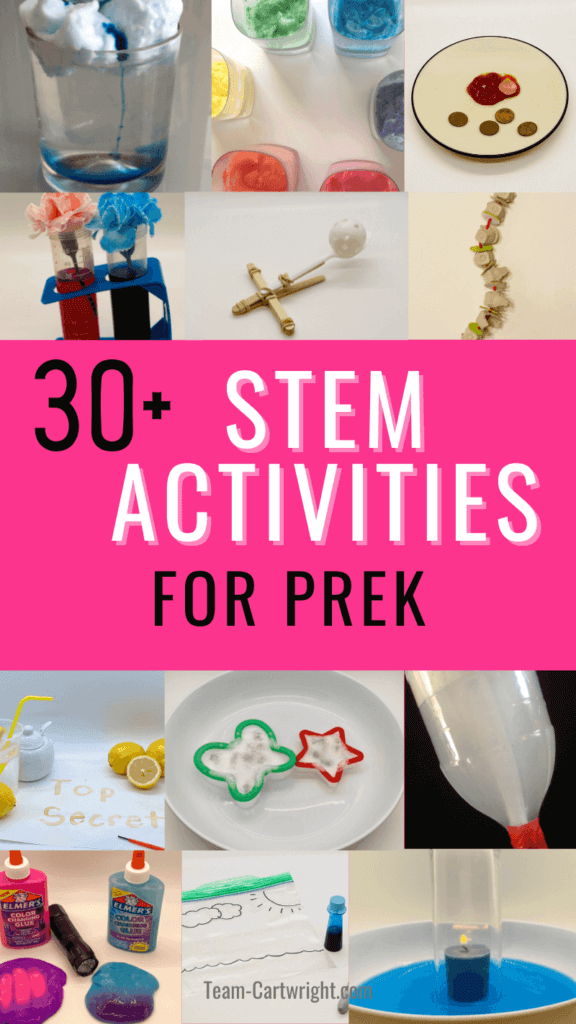
Goals for PreK STEM Activities
The number one goal for STEM with PreK children? It’s still fun. Yes, we are working towards more directed learning and growing attention spans for when they start kindergarten. But if they aren’t having fun, they won’t be learning.
Now, as your kids get older that means workbooks or worksheets for directed learning time can be fun. (Children with older siblings can be especially happy to do work like their big siblings.) A good workbook can for sure make some PreK children happy. But it also means plenty of play-based learning still.
Hands-on activities are still the best as well. When kids get to really experience things they get the most out of them. This means letting them touch, smell, see, hear, and taste when it is safe to do so. Let them get in there and give it all a go!
Making Observations
Just like in preschool STEM, observing the STEM you are doing is super important.
As caregivers, this means it is helpful to ask guiding questions such as What did you see? What do you hear? etc. Encourage your child to really pay attention to the world around them. Even if they don’t fully understand the scientific explanation of what happened, they are learning.
Active Listening
We’re talking about listening as adults, not the children listening.
A part of having children observe is listening to their observations. They need to know that whatever they are experiencing is valid and that they can share. Children can quickly fall into the trap of looking for only the ‘right answer’ to questions. We want to encourage them to trust themselves and believe that they are smart enough to be little scientists, which means listening to them.
Listening also means paying attention to their potential explanations and ideas. It can be hard to stay quiet when we know the real explanation to a phenomenon you just observed, but it is important to let them work it out on their own.
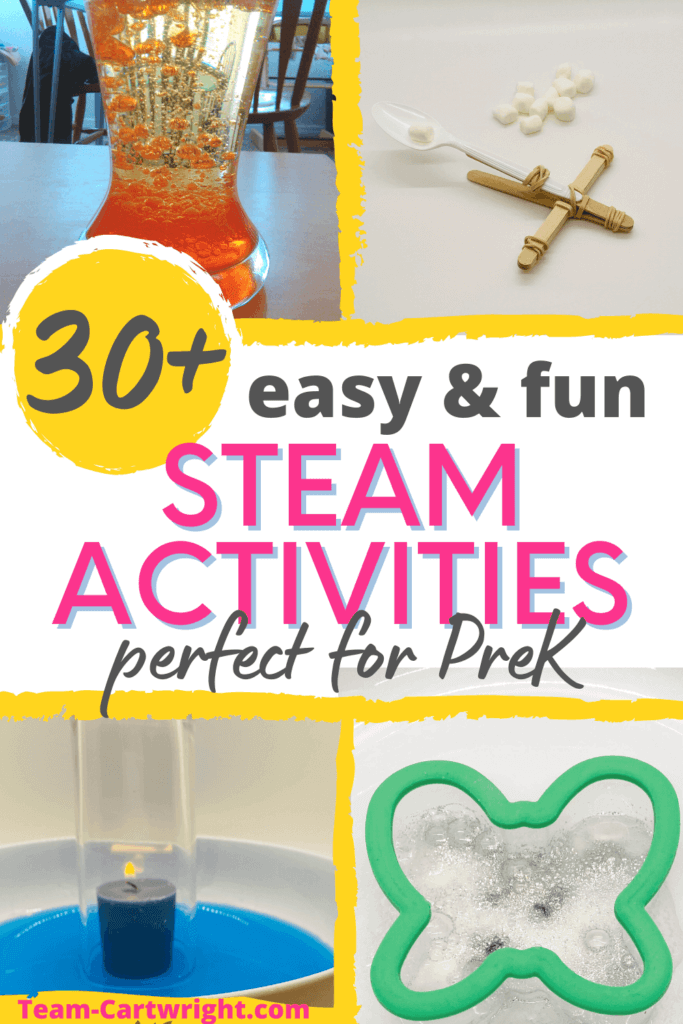
Using the Scientific Method/Following Directions
The scientific method is an organized way of running an experiment. This is important for scientific integrity, and it is a great way to work on following directions with PreK kids.
It is important to follow directions, and it is a skill to learn to follow a series of directions in the correct way. Performing experiments lets children practice these skills.
It is important to give children the freedom to explore as they please, but building logical problem-solving skills is important and the scientific method really helps with that.
Having Patience
Expecting patience from a PreK kid? What? Oh yes, having patience is an important goal for PreK science.
It is hard for young children to hold still, wait, and be patient. But science and STEM can really need these skills. Fortunately, they can also offer really strong motivation to be patient.
Not every experiment happens quickly, not every step can be done at the same time, and not every answer will be discovered right away. While it is developmentally appropriate for this age range to not be super patient, it is okay to work on it as a goal.
This is another science goal that transfers over as a life goal. Sometimes we need to wait and see what happens before we act, and STEM activities can really help with this skill.
Repetition
No, we have not left the repetition phase of children’s activities.
As your children get older they will be ready for more new, fun, challenging STEM activities. But that doesn’t mean you have to leave the old favorites behind. Old activities can bring new insight through the eyes of a PreK child as opposed to a toddler.
Because of this, you will see activities on your list that have been on earlier lists. Every time your child does an activity they learn something new or at least reinforce concepts. This is also what happens when kids play. Play-based learning is amazing for kids, so be ready to play over and over.
Easy PreK STEM Activities
Now that we know how important STEM is for kids, and how they are learning through them, let’s get to the fun part: The Activities!
Which PreK STEM activity are you going to try first?
PreK STEM Activities
Easy and fun STEM activities and science experiments that are perfect for PreK students, ages 4 years old and 5 years old.
Kids Can Code! Simple and Fun Lego Coding Activities
Build early coding skills in a fun and easy screen-free way! Learn the basics of pattern building and recognition while working fine motor skills at the same time!
3 Easy Science Activities to Teach Kids How Colors Work
Colors make science beautiful and fun, plus they help children clearly see concepts in action! Get 3 super easy, super fun color experiments that all use at home items. Turn your kitchen into a lab full of color!
Colored Flower Experiment: Spring Science for Kids
Want to learn how plants drink water and turn them beautiful colors in the process? This capillary action experiment is perfect! Turn white flowers colors just by placing them in colored water. The full scientific explanation is included!
At Home Chemistry: Cleaning Pennies with Ketchup
Can you clean a penny with ketchup? This amazing STEM challenge wows kids and teaches chemical reactions at the same time. Easy, fun, and fast to set up, this is the perfect way to walk through the scientific method with your child.
How Did You Hear That? Simple Sound Science for Kids
Kids love to be loud, use that as you study the science of sound! Make echos, a balloon amplifier, a string sound transmitter, and more. Simple and fun ways to learn about sound waves.
Growing Crystals for Kids: Create Your Own Jewels!
Make your own beautiful crystals at home! Get 3 fun and easy ways to make crystals of all colors, even homemade rock candy. Plus learn about how crystals form in nature.
Butterfly STEAM Activities for Preschoolers and Toddlers
Butterflies and caterpillars capture children's imaginations and make great science projects! Get fun and easy STEAM activities you can make today that work art and science.
Dinosaur Preschool Activities: Sensory STEM Fun
Does your preK child love dinosaurs? Then you must do these sensory STEM activities! Make your own dino feet, rescue dinosaurs from a glacier, make your own fossils, and more. Lots of dinosaur fun and learning.
How To Create a Tasty and Fun Archaeological Experience
Want a tasty way to be an archaeologist? Make your own dino dig! This is easy to make and super fun. It would be great for a birthday party too!
Easy Weather Science Experiments for Preschoolers and Toddlers
Weather is amazing for doing STEM with kids because they can clearly experience what they are learning about! Get easy and fun weather science activities your child will adore.
Moon Activities for Preschoolers
Children are fascinated by space. (Like a lot of adults!) Help your little scientist learn about the moon with these fun and easy activities. Tidal locking, eclipses, moon phases, and more! Even a tasty cookie experiment.
How To Make Superhero Straw Shooters
Every child should see themselves as a superhero, and this is a fun and easy way to make that happen. Learn how to make superhero straw shooters and learn about how they work!
Sunscreen Painting: STEAM For Kids
Why is sunscreen so important? Help your child learn the science of sunscreen by seeing it work with this fun and easy STEAM craft.
Soap and Pepper Experiment: How soap works
Why is soap so important? How does it get germs off our hands? Try this fun and simple science experiment that lets your child see soap working. You already have all the supplies to do this right now!
Leak Proof Bag Experiment
Did you know you could poke a pencil through a bag of water and it won't leak? Learn how this amazing experiment works!
Exploding Bag Experiment for Kids
Create an awesome (and totally safe) explosion at home with this exploding bag experiment! Use kitchen supplies for a chemical reaction that never fails to thrill.
Funicular Trains: Pulleys for Kids
Learning about simple machines is a great way to introduce kids to physics! And they are so easy to make. You can make a simple pulley system out of string and straws! This makes for great dramatic play by pretending it is a ski lift or elevator.
Science by the Pool: Easy Summer STEM Activities
Want to add some learning to your swim time? These easy and fun STEM activities can be done with no prep at the pool! They even work in kiddie pools. Real-world learning that will stick with your child.
Simple, Strange, and Fun Human Tricks to Mess with Your Kids
Time for fun with proprioception! Help your child understand how their body moves in space by trying these fun challenges. You can trick your body into thinking it's somewhere else! These require no materials, just your child and a sense of adventure.
How To Make a DIY Stethoscope for Kids
You can make your own stethoscope at home! This is a simple STEAM craft that really works. It's perfect for doctor themed dramatic play.
Digestion Experiment for Kids- DIY Stomach Model
How does our stomach turn food into energy? This is a super simple hands-on experiment that teaches kids how our stomachs break down the food we eat.
How To Make a Model Spine: Anatomy STEM for Kids
Our spines are amazing. They hold us up and support our bodies, yet we can move in all sorts of ways. Grab an egg carton and make a spine model that clearly shares with your children how our spines work.
Easy Heart Pump Model: Cardiovascular STEM for Kids
We can feel our heart beat, but how exactly is it working? You just need some straws and balloons to make a heart model that really pumps blood. Learn how!
Working Lung Model for Kids
How do we get air into our lungs? This DIY lung model lets your child see lungs breathing and learn more about how their bodies work..
Warm-Blooded Vs Cold Blooded Animal Activity (with Color Changing Slime)
Learn how to make color-changing slime! It's actually easier than you might think. Plus it is a great way to explain the differences between warm-blooded animals and cold-blooded animals. This is a hands-on demo that really makes an impact on kids.
How To Make Butter with Kids: The Science of Churning Butter
Science you can eat! Making butter is the perfect experiment for the youngest scientists. It clearly shows different states of matter, is totally taste safe, and even helps get your child's energy out. Wins!
Lemon Juice Secret Writing: DIY Invisible Ink Science
Did you know you can make disappearing ink with items in your kitchen right now? Learn how to turn a simple lemon into invisible ink and get ready to feel like a secret agent!
DIY Soda Bottle Terrarium For Kids!
Make your own personal garden! Learn how to make a DIY terrarium from recycled materials. Your child can learn about plant life cycles and gardening anywhere.
The Science of Slime and the Best Homemade Recipes
What makes slime so slimey? How does it stay together but stretch so well? Learn the science behind slime and get some of the best homemade slime recipes you have to try.
How To Make Mystery Tinker Bags and Explore Creative STEM Fun
Tinker trays encourage creative problem solving, and these mystery bags just add to the fun. Give your child fun engineering challenges using household items!
DIY Confetti Poppers for Kids!
Take your celebrations up a notch with DIY confetti poppers! Learn how to make these fun poppers from toilet paper tubes. You'll learn how they work and get tips to minimize mess. These poppers can turn any day into a party!
How To Make an Easy Easter Egg Rocket
Ready for a real STEM challenge? This is a tougher one, but super fun. Learn how to make an Easter egg rocket and challenge your child to make it really work.
Science Experiments for PreK
Which PreK STEM activities are your favorite?

